Weatherproof External Cladding for Residences by Futurewood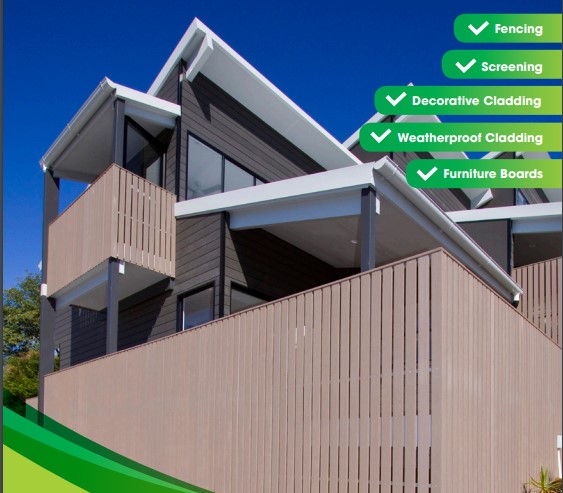 Enviroslat Weatherproof Cladding by Futurewood. While both composite external cladding and traditional wood or timber offer a natural, earthy aesthetic- there are a few key differences that go beyond how similar they both look. Futurewood provides a few insights about using weatherproof external cladding vs. traditional timber. Using Cladding to Improve Residential AestheticsBuilders can use external cladding or siding to elevate the design or style of any residential project's exterior. But compared to siding, cladding can be oriented in more versatile ways (horizontal, vertical, or diagonal) offering more freedom in designing. And while "siding" is applied to a wall or cement directly (such as being nailed directly to the insulation foam board or sheathing), cladding is applied indirectly. In action, a wall cladding- via the use of furring strips, is applied separately from the exterior sheathing, therefore, allowing the creation of a ventilated drainage plane and water-resistive barrier. This quality of using cladding is an advantage because designers and architects can easily manipulate a facade's depth while protecting a building from natural elements such as wind and rain.
Advantages of Weatherproof (Composite) CladdingBecause of its practicality and functional advantages, cladding presents a more flexible and cost-effective solution to provide an instant facelift for your home or property's external facade. The two main options for external cladding used today, whether it is for a residential or home and/or business or commercial property, are weatherproof (composite) cladding or traditional timber cladding. These two are compared based on a few important factors such as aesthetics, cost, maintenance, materials, and how durable they are. 1. Appearance or Aesthetics. While composite cladding and traditional timber cladding appear similar in aesthetics, wooden material cladding (a harvested material) only offers a timber look unless you apply paint over it. On the other hand, using composite cladding products (a manufactured material) allows you to choose from a wide selection of colours, looks, and textures. While it is true that you can find wood cladding that suits your preference and matches the design of your project, there's simply a wider variety of options for using composite cladding. Do you want a timber look? you can achieve that with a natural wood-looking composite cladding without the hassles of maintaining real timber.
2. Durability. Between traditional wood cladding and composite cladding, the latter offers a longer lifespan. Whether a softwood or hardwood material is used, both tend to be less durable over time even when properly maintained. Prone to rot, insect damage, moisture absorption, splintering, and twisting, natural wood will also need to be replaced every 10-20 years. This non-sustainable quality is evident in the production/harvest of more traditional timber cladding and results in the need for landfills to accommodate discarded materials. On the other hand, the synthetic nature of composite cladding tends to be more durable than timber. Manufactured from plastic, wood fibre, and other similar materials, composite cladding offers resistance to UV, moisture, insect infestation, rotting, splitting, splintering, fire, and other elements. Similar to treated lumber, materials for composite cladding are not recyclable but the fact that it lasts longer and sometimes does not require replacement (sometimes for a lifetime)- gives it a slight advantage with regards to sustainability. 3. Maintenance. When it comes to maintenance and care, composite cladding also offers an advantage. For example, to repel insect infestation in natural wood- it would need to undergo routine coasting such as staining, sealing, and painting maintenance or rework. And if you don't want your traditional timber cladding to fade, it would need regular sanding and painting to keep its attractive appearance. In contrast, composite cladding requires no such upkeep to maintain its aesthetics or to prevent fading. It also does not require sealing procedures to prevent insect damage and for maintenance, you only need to clean it with water occasionally. 4. Costs. Composite external cladding does cost slightly more than traditional timber or wood cladding. But as a result of its better durability and minimal maintenance, choosing composite cladding is still the more cost-effective solution than using wood cladding. Costs associated with maintaining timber cladding such as sealing, painting, and staining are not necessary with composite cladding. So considering the total price of ownership which includes maintenance costs (including labour costs and time spent on rework), using composite cladding will offer more savings in the long term.
Weatherproof External (Composite) Cladding for your Home by FuturewoodFuturewood of Australia, a trusted quality supplier of value-added alternatives to traditional timber products, proudly supplies Enviroslat- a weatherproof composite external timber cladding that can help you achieve an eye-catching design or finish to your residential project. Enviroslat Weatherproof WPC CladdingUnlike traditional timber, Enviroslat external house cladding requires minimal maintenance and will not rot over time. Manufactured from recycled and environmentally-friendly materials, Enviroslat is a cost-friendly solution for designing or revamping the external aesthetic of your home while offering sustainability benefits. Enviroslat from Futurewood is a WPC or Wood Plastic Composite cladding, a natural timber replacement cladding made from a combination of plastic (both virgin and recycled) and cellulose fibre including wood, bamboo, or rice. This type of cladding material was invented in the USA and its manufacturing method was refined during the period between the late 80s to the early 90s. Touted as one of the best external cladding options currently available globally, this type of composite cladding is produced and sold internationally. WPC, as a cladding material, is a great replacement for traditional timber because it requires minimal maintenance and does not need methods such as oiling or staining typically needed for timber cladding products. When you use WPC cladding products, you will not encounter rotting, splinters, sap or tannin runs, insect damage, or any other issue associated with using traditional timber cladding.
Futurewood supplies Enviroslat external composite cladding in a 156mm x 21mm profile with an overall cladding board thickness of 8mm. These boards can be ordered custom-made to any length between 1m to 5.8m long. And to minimise waste for bigger projects, the boards can be made in several different lengths. Enviroslats are available in a selection of standard colours (ie. Mahogany, Chocolate, Weathered Stone, Slate Grey, Walnut) with a coarse-sanded finish on the face of the cladding board face and a darker-grooved shiplap joint. Versatile in design, the 156mm profile boards overlap in order to hide the screw fixing providing a concealed fix for the cladding- and can be installed horizontally or vertically. Sustainable and 100% recycled cladding productAll Futurewood products are 100% recycled. They are manufactured from a combination of 35% recycled polyolefin (a plastic residue derived from post-industrial waste) and cellulose material (30% rich husks and 25% hardwood wood flour). Representing 90% of overall materials, these main product ingredients are classified as recycled and mixed with UV inhibitors, fungicides, colour pigments, and bonding agents to deliver a sustainable cladding product that is low-maintenance and serves as a viable alternative to rainforest natural timber. Highly moisture resistant, Enviroslat composite cladding products are produced with a non-chemical reactive polymer base. In case of a chemical or liquid spill on its surface, avoid potential staining of the cellulose material by washing it off immediately as fat, wine, foodstuff or other liquid agents- if allowed to remain to soak in overtime, could stain the material. Bleach is not recommended for wiping as it can affect the colour pigment (refer to care and maintenance guidelines for more details).
Colour Quality over TimeEnviroslat boards are made with UV inhibitors to help resist UV radiation damage, protecting the colour pigments used in the product from continual exposure to UV rays. Note that after application, the colour will soften within the first 4-12 weeks when they are first exposed to the elements- a natural bedding-in process as a result of the cellulose fibre lightening in the formulation. After this initial colour weathering, the lightened shade will remain for many years. Enviroslat Exterior Composite Cladding MaintenanceAs mentioned above, composite cladding requires minimal maintenance, and the same is true for Enviroslat exterior cladding. These boards only need occasional cleaning mainly to just keep the surface dirt-free and to remove general grime. Futurewood recommends periodic cleaning of Enviroslats composite cladding with a simple mild detergent or household cleaner. A pressure washer may be used to clean your fence or cladding but be careful and make sure not to run it at greater than 8Mpa (1200 PSI) or position the nozzle within 300mm of the boards. Doing so may cause unwanted surface markings on the board. Basic cleaning can help keep your Enviroslat cladding in optimal condition and looking attractive for longer. This will also inhibit the potential of mould growth that may occur naturally because of the dirt that may build up over time on the cladding boards. Be sure to check out the care and maintenance guidelines for more details. If you're interested in getting your supply of custom-order Enviroslat Weather-proof Exterior Composite Cladding from Futurewood, please head over to www.futurewood.com.au
|
1300 484 308
|


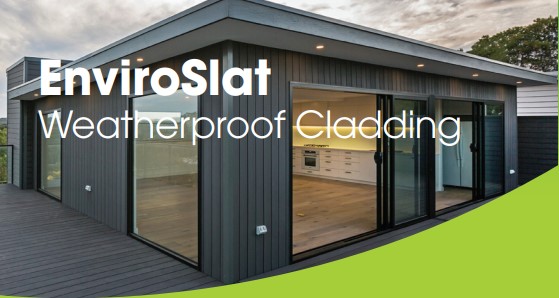
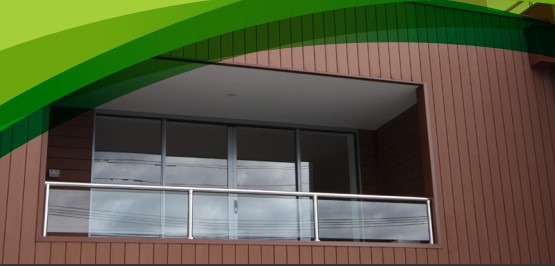
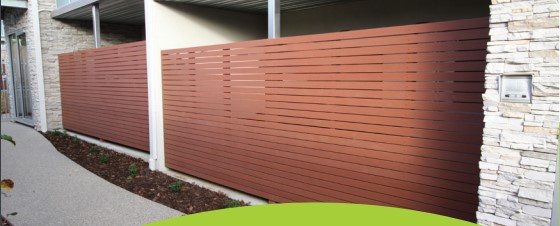
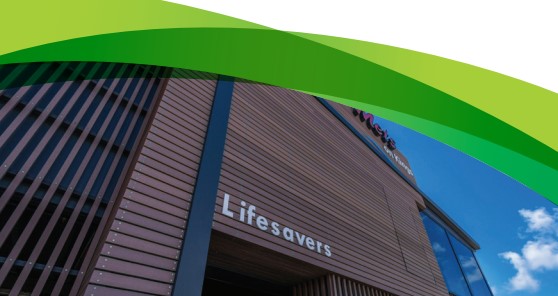
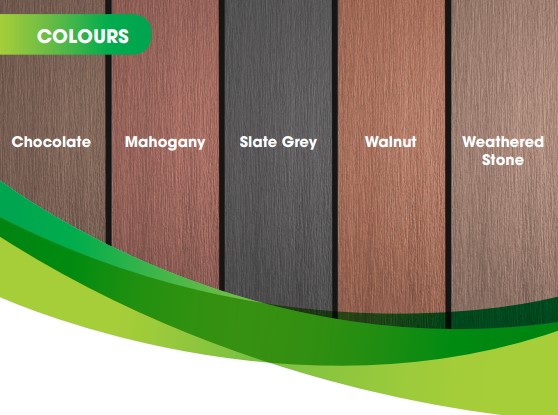
 Facade Screening for Industrial
Facade Screening for Industrial Care Tips for Composite Timber Decking
Care Tips for Composite Timber Decking Composite Timber for Picnic Tables by
Composite Timber for Picnic Tables by Three Types of Decking by Futurewood
Three Types of Decking by Futurewood Weatherproof Cladding Supplier by
Weatherproof Cladding Supplier by Composite Timber Fences for Backyards by
Composite Timber Fences for Backyards by Composite Decking Frame by Futurewood
Composite Decking Frame by Futurewood Composite Decking Supplier NSW by
Composite Decking Supplier NSW by Composite Timber for Outdoor Benches by
Composite Timber for Outdoor Benches by Vertical Screening for Backyard by
Vertical Screening for Backyard by Weatherproof Composite Cladding for
Weatherproof Composite Cladding for Maintenance Free Decking by Futurewood
Maintenance Free Decking by Futurewood Timber Alternative Features by
Timber Alternative Features by Aluminium Subframe for Decks by
Aluminium Subframe for Decks by Advantages of EnviroSlat Screening
Advantages of EnviroSlat Screening Composite Timber Screen Fencing by
Composite Timber Screen Fencing by External Weatherproof Cladding by
External Weatherproof Cladding by Ultralow Aluminium Joist and Pedestal
Ultralow Aluminium Joist and Pedestal Advantages of Composite Decking
Advantages of Composite Decking How to Clean Composite Timber by
How to Clean Composite Timber by
